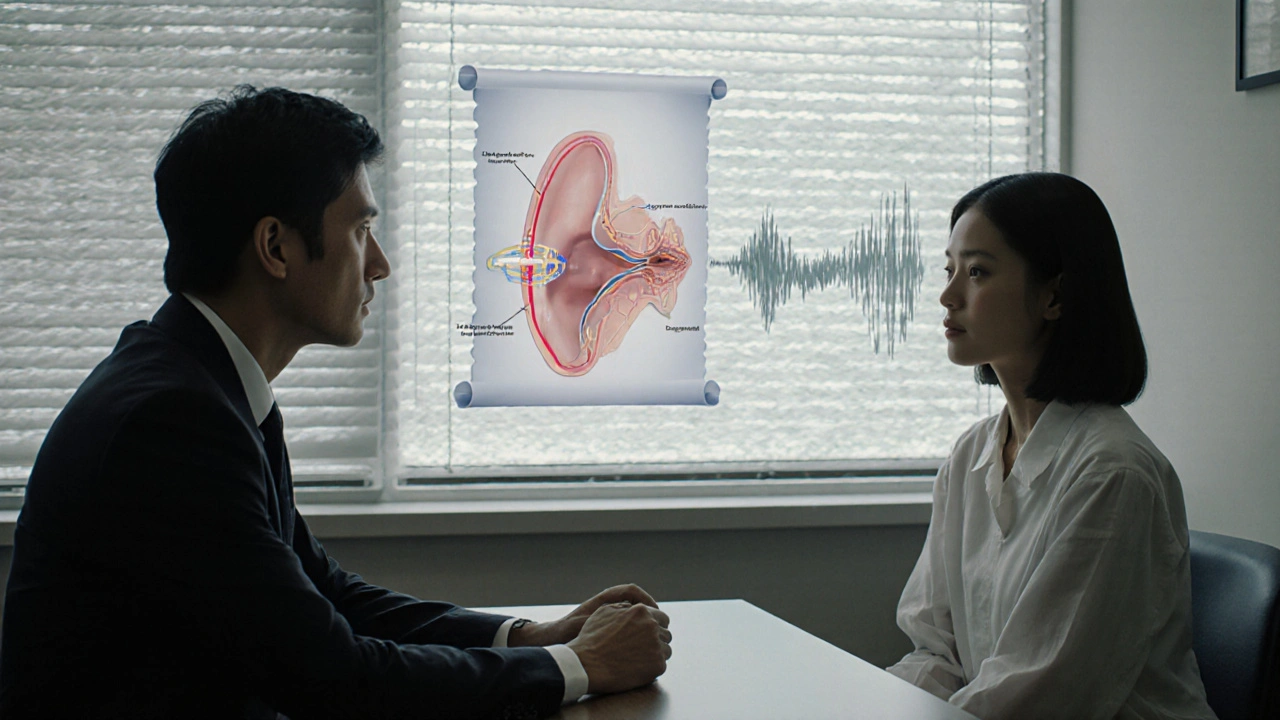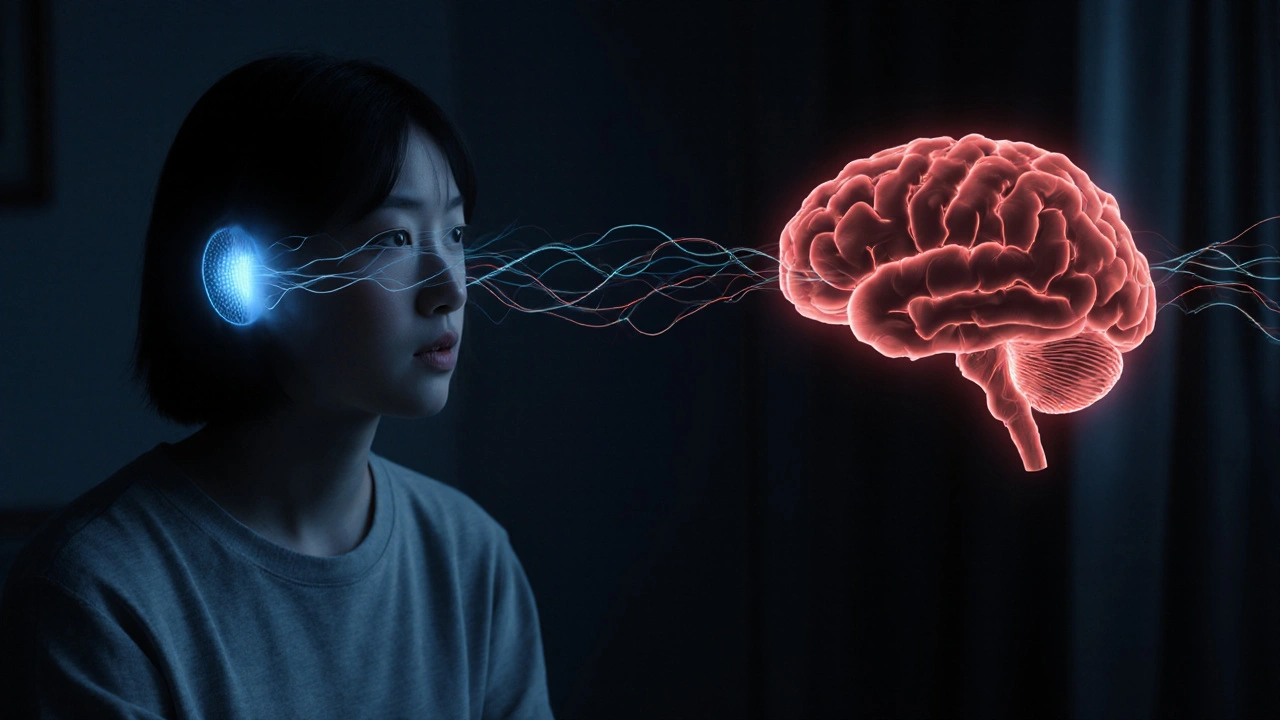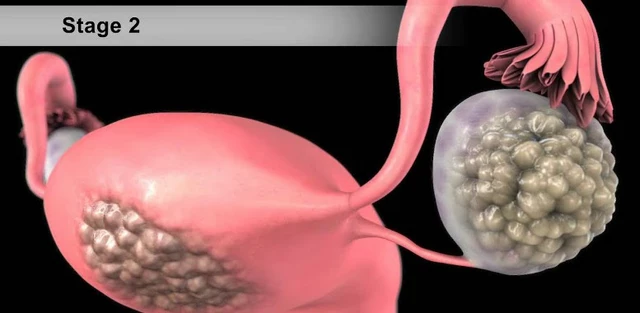What Is Tinnitus Retraining Therapy?
Tinnitus Retraining Therapy, or TRT, isn’t about silencing the ringing in your ears. It’s about teaching your brain to stop noticing it. Developed in the early 1990s by Dr. Pawel Jastreboff, TRT is built on a simple but powerful idea: your brain has already learned to react to tinnitus as a threat. TRT helps it unlearn that reaction.
Most people with tinnitus focus on getting rid of the sound. But TRT flips that script. Instead of fighting the noise, you train your brain to treat it like background hum-like the fridge running or traffic outside. Over time, your brain stops labeling it as dangerous, and the emotional distress fades. You still hear it, but it no longer controls your mood, sleep, or focus.
How TRT Works: The Two Pillars
TRT isn’t one thing. It’s two tightly linked parts: counseling and sound therapy. Neither works well without the other.
The counseling part is where the real change begins. You meet with a trained audiologist for 60 to 90 minutes, usually once a month for the first few months. These aren’t quick chats. They’re deep dives into how your hearing system works. You’ll learn about the cochlea, how sound travels through your ear, and why tinnitus forms when the brain misinterprets neural noise. You’ll hear about the limbic system-the part of your brain tied to emotion-and how it gets stuck in a loop with your auditory system. This isn’t theory. It’s science backed by brain scans showing stronger connections between the hearing center and the fear center in people with distressing tinnitus.
The second pillar is sound therapy. This is where you use low-level, non-intrusive noise to gently reduce the contrast between your tinnitus and the world around you. You don’t need loud music or white noise blasts. You need quiet, steady sound-like gentle static or ocean waves-played through small ear-level devices, hearing aids, or even small room speakers. The goal? To keep your auditory system busy enough that your brain stops fixating on the tinnitus signal.
Why Sound Therapy Isn’t Just Background Noise
Many people think sound therapy means turning on a fan or playing rain sounds all day. That’s not enough. TRT sound therapy is precise. The volume is calibrated to be just below the level of your tinnitus. Too loud, and it’s distracting. Too quiet, and it does nothing.
Think of it like trying to ignore a faint ticking clock. If you’re in a silent room, your brain locks onto it. But if you turn on a quiet air conditioner, the ticking fades into the background. That’s what TRT does-it lowers the contrast between tinnitus and ambient sound. Over weeks and months, your brain starts filtering out the tinnitus signal automatically. Studies show that after 12 months of consistent use, patients often need 3 to 5 decibels more volume to even notice their tinnitus, meaning their brain has started blocking it subconsciously.
The devices used are small, discreet, and worn during waking hours for 6 to 8 hours a day. Many patients start with hearing aids that have built-in sound generators if they also have hearing loss. Others use standalone sound generators, which cost between $500 and $1,200 each. The key is consistency-not perfection. Missing a day or two won’t ruin progress, but long gaps make it harder to retrain your brain.

Who Is TRT For? The Four Patient Groups
TRT isn’t one-size-fits-all. It’s customized based on your hearing and tinnitus profile. There are four main groups:
- Group 1: Normal hearing, tinnitus present. Uses sound generators only.
- Group 2: Hearing loss, but tinnitus isn’t noticeable in quiet. Uses hearing aids only.
- Group 3: Hearing loss and noticeable tinnitus. Uses both hearing aids and sound generators.
- Group 4: Tinnitus plus sound sensitivity (hyperacusis or misophonia). Needs special protocols to desensitize the nervous system.
This level of personalization is why TRT works better than generic advice. If you have hearing loss, treating just the tinnitus without fixing your hearing is like trying to quiet a noisy TV by turning down the volume while the speakers are still broken. TRT fixes both.
How Long Does It Take? Realistic Expectations
TRT isn’t a quick fix. It’s a marathon. Most people start noticing changes after 3 to 6 months. Real results-where tinnitus stops bothering you-usually take 12 to 24 months. That’s because habituation isn’t a switch you flip. It’s a slow rewiring of neural pathways.
Success is measured not by silence, but by peace. Patients who complete TRT report being aware of their tinnitus only 5% to 15% of the day, compared to 80% to 100% before treatment. They don’t wake up anxious. They don’t dread quiet rooms. They can focus at work, sleep through the night, and enjoy social gatherings without constantly checking if the ringing is louder.
Studies show about 80% of people who stick with the full protocol see significant improvement. That number drops to 55% if the therapy is done by someone not properly certified. Certification matters. The Jastreboff TRT Certification Program requires 40 hours of training and supervised clinical work. There are only about 500 certified providers in the U.S. as of 2023.
The Cost and Accessibility Challenge
TRT is expensive. A full course typically costs between $2,500 and $4,000 in the U.S., not including the cost of devices. Insurance rarely covers it. That’s a major barrier.
Dropout rates are high-30% to 40% of people quit before the 12-month mark. Why? The time commitment is heavy. Monthly appointments, daily sound therapy, and the mental effort to stay consistent can feel overwhelming. Some find the counseling sessions repetitive. Others hate wearing the sound generators, even though they’re small.
But here’s what the data shows: those who stick with it almost always benefit. A 2020 study found that certified TRT providers achieved an 85% success rate. Non-certified providers using modified versions? Only 55%. The difference isn’t just technique-it’s adherence to the full protocol.

TRT vs. Other Treatments
TRT isn’t the only option. Cognitive Behavioral Therapy (CBT) is the other evidence-backed approach. CBT focuses on changing how you think about tinnitus. TRT changes how your brain processes it. They work differently, but both are effective.
CBT is more widely available and often covered by insurance. It’s shorter-usually 6 to 12 sessions. But it doesn’t include sound therapy. TRT is longer and more structured, but it addresses the root neurological cause, not just the emotional response.
Some people combine both. Others try sound therapy alone, like apps or masking devices. But without counseling, most people never fully disengage from the fear of tinnitus. That’s why TRT’s counseling component is considered 60% to 70% of its success.
What’s New in TRT?
TRT isn’t stuck in the 1990s. In 2021, the Jastreboff Foundation launched a telehealth certification program to make training more accessible. Now, more audiologists can learn the method without traveling to specialized centers.
Research is also exploring TRT combined with neuromodulation. A 2023 clinical trial using transcranial magnetic stimulation alongside TRT showed 92% of patients improved at six months-compared to 78% with TRT alone. This suggests future versions could speed up habituation.
Meanwhile, major hearing healthcare providers are slowly adopting TRT principles. Sixty-five percent now include some form of sound therapy or counseling in their tinnitus programs-even if they don’t call it full TRT. That’s progress.
Is TRT Right for You?
If you’ve tried earplugs, apps, supplements, or masking devices and still feel trapped by your tinnitus, TRT might be the answer. It’s not for everyone. You need patience. You need consistency. You need to trust the process-even when it feels like nothing’s changing.
Start by finding a certified TRT provider. Ask if they’ve completed the Jastreboff certification. Ask about their success rates. Ask how they tailor sound therapy to your hearing profile. Don’t settle for someone who just hands you a white noise machine and calls it a day.
TRT doesn’t promise silence. But it does promise freedom-from fear, from obsession, from the constant battle with your own ears. That’s worth the time.
Can TRT make tinnitus go away completely?
No, TRT doesn’t eliminate the sound of tinnitus. Instead, it helps your brain stop reacting to it emotionally. Most people who complete TRT still hear the ringing, but they notice it only 5% to 15% of the time during waking hours-because their brain no longer flags it as a threat.
How long does TRT take to work?
Most people begin to feel less distress after 3 to 6 months. Full habituation-where tinnitus no longer affects your mood, sleep, or focus-typically takes 12 to 24 months. Consistency is more important than speed.
Do I need hearing aids for TRT?
Only if you have hearing loss. If your hearing is normal, you’ll use sound generators alone. If you have hearing loss, you’ll likely use hearing aids with built-in sound generators. The goal is to restore normal auditory input while reducing the contrast between tinnitus and background sound.
Is TRT covered by insurance?
Rarely. Most insurance plans in the U.S. don’t cover TRT counseling or sound generators. The full course typically costs $2,500 to $4,000. Some patients use HSA or FSA funds, or payment plans offered by clinics.
Can I do TRT on my own with apps and YouTube?
You can use sound therapy apps, but you won’t get the full benefit without professional counseling. The neurophysiological education component is what changes your brain’s emotional response. Without it, you’re just masking the sound-not retraining your brain. Studies show success rates drop by half without certified counseling.
What’s the difference between TRT and CBT for tinnitus?
CBT helps you change how you think about tinnitus-like reducing anxiety or avoidance behaviors. TRT changes how your brain processes the sound at a neurological level, using counseling and sound therapy together. CBT is shorter and more widely available. TRT is longer and targets the root cause, but requires specialized training to deliver correctly.
Are sound generators uncomfortable to wear?
They’re small, discreet, and designed to be worn for hours. Most patients adjust within a week or two. The sound is low and non-intrusive-like soft static or gentle wind. If you find them annoying, your provider can adjust the volume or type of sound. Comfort improves with time and proper calibration.
What happens if I stop TRT early?
If you stop before 12 months, you may not reach full habituation. Progress can reverse if the brain relearns to treat tinnitus as a threat. Some people maintain gains after stopping, especially if they continue using low-level sound in quiet environments. But the strongest results come from completing the full protocol.






Katy Bell
22 November 2025 - 20:40 PM
I tried TRT after two years of being wrecked by tinnitus. I didn’t believe it at first-like, how do you train your brain to ignore something that’s always there? But after six months, I realized I hadn’t thought about it all day. Not once. It’s still there, but it’s just… background now. Like the AC humming. I cry when I think about how much peace I got back.
Ragini Sharma
24 November 2025 - 17:55 PM
lol i thought white noise apps were the answer until i read this. so its not just ‘play rain sounds and chill’? wow. i thought i was doing trt with my spotify playlist. my brain is still screaming at me like its 2018.
Linda Rosie
26 November 2025 - 02:00 AM
The neurological basis of habituation is well-documented. TRT’s dual-component structure aligns with neuroplasticity principles. Consistency is non-negotiable.
Vivian C Martinez
27 November 2025 - 08:29 AM
You’re not alone. I was skeptical too. But if you stick with it-even when it feels pointless-you’ll start noticing little wins. Like sleeping through the night. Or not flinching when the microwave beeps. Those moments add up. Keep going. You’ve got this.
Ross Ruprecht
28 November 2025 - 07:56 AM
Sounds like a scam. Why pay $4k for a fancy fan? I just turn up my music and forget about it. Problem solved.
Bryson Carroll
29 November 2025 - 05:34 AM
People pay thousands to be told their brain is broken and to wear earbuds that sound like static? I’ve got a 20-dollar white noise machine and a therapist who tells me to breathe. At least I’m not getting scammed by pseudoscience dressed up as neuroscience
Jennifer Shannon
29 November 2025 - 22:14 PM
You know, I’ve been thinking about this a lot-how our brains are these ridiculous, overworked little machines that turn every little glitch into a crisis. Tinnitus isn’t a disease, it’s a glitch. And TRT doesn’t fix the glitch-it teaches the brain to stop panicking about it. Like how you stop noticing your socks after a few minutes. It’s not that the socks disappear, it’s that your brain says, ‘Meh, they’re just socks.’ That’s the magic. And honestly? It’s beautiful. The brain doesn’t need to be fixed-it just needs to be trusted. We’ve been taught to fight our own biology like it’s the enemy. But what if it’s just trying to protect us? And TRT… it’s like whispering back, ‘I see you. I’m safe now.’
Suzan Wanjiru
1 December 2025 - 03:33 AM
TRT works but only if you do it right. Most people skip the counseling and think the sound device is the cure. It’s not. The education part-that’s where the brain rewires. I had a provider who just handed me a generator and said ‘use it daily.’ I quit after a month. Then I found a certified one. Took 18 months but now I barely notice it. Don’t cut corners.
Kezia Katherine Lewis
1 December 2025 - 03:39 AM
It’s critical to distinguish between auditory habituation and cognitive reframing. TRT leverages neurophysiological models of tinnitus distress, specifically the dual-pathway model involving the auditory cortex and limbic system. Sound therapy induces auditory contrast reduction, while counseling facilitates cognitive disengagement via expectancy violation and extinction learning. This is not ‘masking’-it’s top-down neural modulation.
Henrik Stacke
1 December 2025 - 15:11 PM
As someone who lived through this in the UK, I can say with certainty: the difference between a certified provider and a general audiologist is night and day. I paid £2,800 for the full protocol, and yes, it was worth every penny. My tinnitus didn’t vanish-but my anxiety did. I can now sit in silence without my heart racing. That’s not a cure. That’s liberation.
Manjistha Roy
3 December 2025 - 01:47 AM
I wish I had known about this five years ago. I wasted so much money on supplements and earplugs. TRT isn't flashy but it's real. If you're reading this and you're struggling, don't give up. It takes time but it works. You're not broken. Your brain just needs a new instruction manual.
Jennifer Skolney
4 December 2025 - 03:37 AM
I’m 3 months in and already sleeping through the night 😭 I didn’t think I’d ever say that again. The sound devices feel weird at first but you get used to them. And the counseling? Honestly? It’s the part that saved me. I cried in my first session. I didn’t even know I was carrying that much fear.
JD Mette
4 December 2025 - 12:45 PM
I’ve been doing TRT for 14 months. Still hear the ringing. Still notice it sometimes. But I don’t react anymore. I used to check my phone every 10 minutes to see if it was louder. Now I just… live. I’m not cured. But I’m free. That’s enough.
Olanrewaju Jeph
4 December 2025 - 17:38 PM
As a clinician in Nigeria, I’ve seen patients with tinnitus struggle without access to TRT. The principles are universal-even if devices are hard to get. We use simple apps and group counseling. It’s not perfect, but it’s better than nothing. The science holds up. The key is consistency. Even small, daily exposure to low-level sound and education changes outcomes. Don’t wait for perfect conditions. Start where you are.